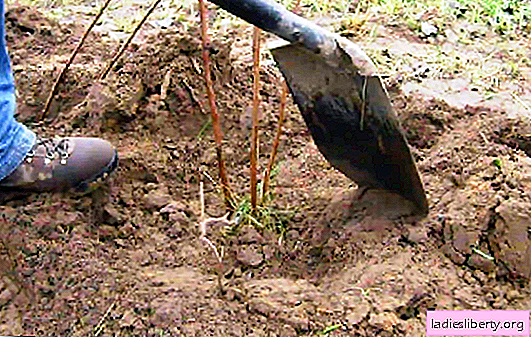
The long-awaited baby was born healthy and strong, but once mommy noticed a strange asymmetry of the gluteal folds. It would seem a trifle, but it is - an important symptom of a possible congenital anomaly. The sooner the crumb is under the reliable protection of a children's orthopedist, the more likely it is that it will be able to cope without loss.
What is hip dysplasia in children
Joint dysplasia is the most common orthopedic anomaly in newborn babies. In simple terms, this is the result of insufficient development of all or some of the elements of the hip joint (TBS) - displacement, underdevelopment, asymmetry. Pathology occurs quite often, happens bilateral or only on the one hand, girls are most susceptible to it. When you delay the normal development of the articular cavity, the femoral head, or a movement disorder, an abnormal condition develops. According to the degree of severity, specialists divide the dysplasia of the joints in children into three groups:
1. Pre-dislocation - there is a violation of the concentration of the femoral head. The ligaments are loose, and it moves freely in the acetabulum. This condition practically does not manifest itself and does not affect the activity of the baby, there is no pain.
2. Subluxation - there is a periodic pop-up of the femoral head from the articular cavity and its subsequent return to its place. Often a click is heard.
3. Dislocation is a rather rare pathology. The head of the joint is constantly outside and well above the acetabulum, which is gradually filled with adipose tissue.

The formation of the joints in the baby continues after birth, therefore, early detection of the anomaly and its correction allow us to hope for an excellent result. However, ignoring the problem is fraught with tremendous troubles, even to the point of lameness in the future, therefore, it is necessary to treat the identification of hip dysplasia in children most responsibly.
Causes of hip joint dysplasia in newborns and risk groups
Approximately 3% of babies are born with a disappointing diagnosis - hip dysplasia. Experts cannot unambiguously identify the main cause of the anomaly by distributing responsibility for it among several factors:
- genetic predisposition - especially important for girls. The risk of dysplasia in newborns in this case is four times higher;
- malformations in the early stages of pregnancy - experts attribute this to poor ecology, environmental pollution;
- hormonal effects - the body of the mom strongly produces oxytocin, which is responsible for the contractile activity of the muscles of the uterus and lactation. If during almost the entire period of pregnancy its level remains within the normal range, then closer to childbirth it increases dramatically. The hormone increases not only the mobility and elasticity of mother’s joints, but also has a similar effect on the joints of the infant. Many experts consider this factor to be the most important when an anomaly occurs;
- tight swaddling is difficult to believe, but only the use of wide swaddling in Japan has allowed over the past 40 years to reduce the incidence of joint dysplasia in children tenfold;
- buttock presentation, prolonged labor, various injuries.
The risk group for the development of anomalies should unambiguously include newborns with increased body weight, premature babies with older brothers and sisters with a similar pathology. After the birth of the baby, the doctor necessarily examines it and, in case of suspicion about the presence of joint dysplasia, prescribes an ultrasound scan. At the age of one month, the orthopedist must examine the baby. Symptoms of the disease are not always pronounced, so it is advisable for mommies to know them in order to watch the baby at home.
Symptoms of hip dysplasia in children - what mom can see
Before visiting the orthopedist, Mommy can check her baby for any abnormalities. It’s not hard to do:
1. Put the baby on the tummy and take a look at the podpagodichnymi and femoral folds. Normally, they are arranged symmetrically. In the presence of dysplasia, there are changes - on the side of the lesion folds deeper, and their number - more. However, only this symptom cannot serve as evidence of the existence of the disease, as it is quite often observed in absolutely healthy children. It may be due to some impaired muscle tone. Another option is also possible - with bilateral joint dysplasia in children, the folds can be arranged in the same way.
2. Turn the baby upside down, bend its legs at the knee and hip joints and, without making special efforts, try to spread the legs apart. As a rule, the baby does not object at all to such gymnastics, and his legs effortlessly fall on the surface of the table. If for one of them the degree of abduction is limited, you can double-check this symptom. To do this, turn the baby on the tummy and bend the legs to the position, as when crawling. Confirmation of restriction of movement can signal the presence of dysplasia.
3. Putting the baby on the back, bend the legs of the crumbs in the knees and pay attention to the coincidence of their height. If one knee is higher than the other, and the legs visually appear to be of different lengths - dysplasia of the hip joint is possible.
4. When bending and subsequent dilution of the baby's legs, a click is observed - most likely, there is a dislocation in place, and a visit to the doctor is indispensable. It is better if the visit will not delay mommy.
Hip dysplasia in children - diagnosis
Having found one or several signs, you should not be upset ahead of time - only a pediatric orthopedist can make a diagnosis. Mom is required not to miss a scheduled visit to him at the age of one month or to visit a doctor, if suspicion arises, at any time. In addition to a thorough examination, the doctor prescribes an ultrasound, and the children over three months, if necessary, take an x-ray. This is the most reliable method of research, because severe forms of dysplasia are not so difficult to recognize, but the first stage, sometimes asymptomatic, is more difficult to detect. Examining the roentgenogram of the joints, the doctor relies not only on his experience, but also uses special schemes. The main indicator of the development of the hip joint is the slope of the roof of the articular cavity.
It is very important to observe the mode of visiting the orthopedist, even with seeming well-being. The regularity of recommended visits is related to the peculiarities of age development, therefore, the doctor should be consulted during the designated periods - when the baby is one month old, then at three or four months. If the problem is identified within the first three months of the crumbs, it is much easier to cope with it. Usually, by the age of eight months, subject to a completely painless course of treatment, the normal functionality of the hip joint is fully restored.
Treatment of joint dysplasia in children
For some calm of agitated parents, it should be noted - hip dysplasia in children under twelve months is not considered a disease. It is simply a condition of the joint that needs correction. However, ignoring the doctor's recommendations can lead to dire consequences - lameness and disability; therefore, giving this problem the required attention is obligatory for the father and mother.
In babies up to three months, the developmental anomaly of the joint may disappear on its own. The only condition - the legs of the crumbs must be in the right position. The main task of treating dysplasia in children is to fix the femoral head in the acetabulum so that it strengthens and reliably overgrown with ligaments. To do this, children's legs must be bent and divorced to the side. Help form a healthy joint:
- wide swaddling - the easiest and most effective way;

- tracking the correct position of the limbs of the baby when using backpacks and car seats, which is encouraged by doctors under certain conditions. The legs of the child should be wide apart;
- the use of various orthopedic devices that help fix the limbs in the desired position - tires, plaster clamps, corsets, Pavlik stirrups. Depending on the severity of the anomaly, the doctor will advise the most effective method. Sometimes it is enough just to use diapers of a slightly larger size, which will keep the crumb legs in a spaced position;
- Special massage and corrective gymnastics.
If hip joints dysplasia was not detected in children before the age of three months and no treatment was performed, it will be more difficult to cope with the illness. This is explained by the fact that at the beginning of life, the joints of the crumbs consist of cartilage tissue and are susceptible to deformation due to any disruption in the connection of the bones. Elements of the joint must be returned to the normal position, for which the above-mentioned devices are used. Only by this method is it possible to stop the development of the disease. In the absence of positive dynamics, a more rigid fixation, in the form of a plaster cast, can be assigned. The special attention of mummies - it is not worth bringing to such serious measures, it is much better - as soon as possible to turn to a children's orthopedist and conduct a much more sparing treatment.
Prevention of joint dysplasia in children
There is absolutely nothing difficult or impracticable in preventing dysplasia - do without tight swaddling, properly keep the crumbs on your hands (with wide apart limbs), while lying on the tummy, baby legs should hang down and, of course, should visit the children's orthopedist in time. Following these simple rules will help to avoid trouble. And if the hip joint dysplasia was nevertheless diagnosed, timely treatment will relieve future problems.











